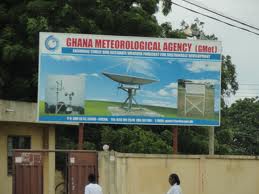 File photo
File photo
The atmospheric heat being experienced in the country, would continue till the month of March when it would peak.
Mr Tetteh Portuphy, Senior Meteorologist at the Ghana Meteorological Agency, Kotoka International Airport, told the Ghana News Agency in an interview that whilst the rainy season is months away, some cloud formation is taking place.
“These clouds trap out-going rays of heat, which is sent back to us, increasing temperatures in the atmosphere as a result,” he said.
He said some isolated rains which are expected next week, could reduce heat levels in the atmosphere temporarily.
He said with the on-set of the major rainy season which is expected in April, the atmosphere would naturally get colder.
Mr Portuphy gave some statistics on heat levels in the country as 30.5 degrees Celsius to 35.3 degrees Celsius, which represent maximum temperatures for the Coastal areas of the country, from December 28-, 2015, to January 3, 2016.
He said this changed to between 30.2 degrees Celsius to 36.6 degrees Celsius, representing an increase of 1.3 degrees Celsius from December 4 2015 to December 10, 2016.
Mr Portuphy said the Coastal areas of the country have minimum temperatures at around 6am, which range between 19 degrees Celsius to 27 degrees Celsius.
He said the maximum temperatures for the Coastal areas range between 30.2 degrees Celsius to 36.6 degrees Celsius.
He said with the Middle sector of the country, minimum temperatures range from 17.5 degrees Celsius to 26.3 degrees Celsius, with the maximum being 31.5 to 37.0 degrees Celsius.
“With the North, there is a range of 17.4 degrees Celsius over Wa to 22.0 degrees Celsius over Navrongo as minimum temperatures, whilst maximum temperatures read 30.0 degrees Celsius over Wa to 39.5 degrees Celsius over Navrongo.”
He advised people to wear light clothing, drink more water, and ensure good ventilation at all times, in order to minimise the ill effects of the heat in the atmosphere.